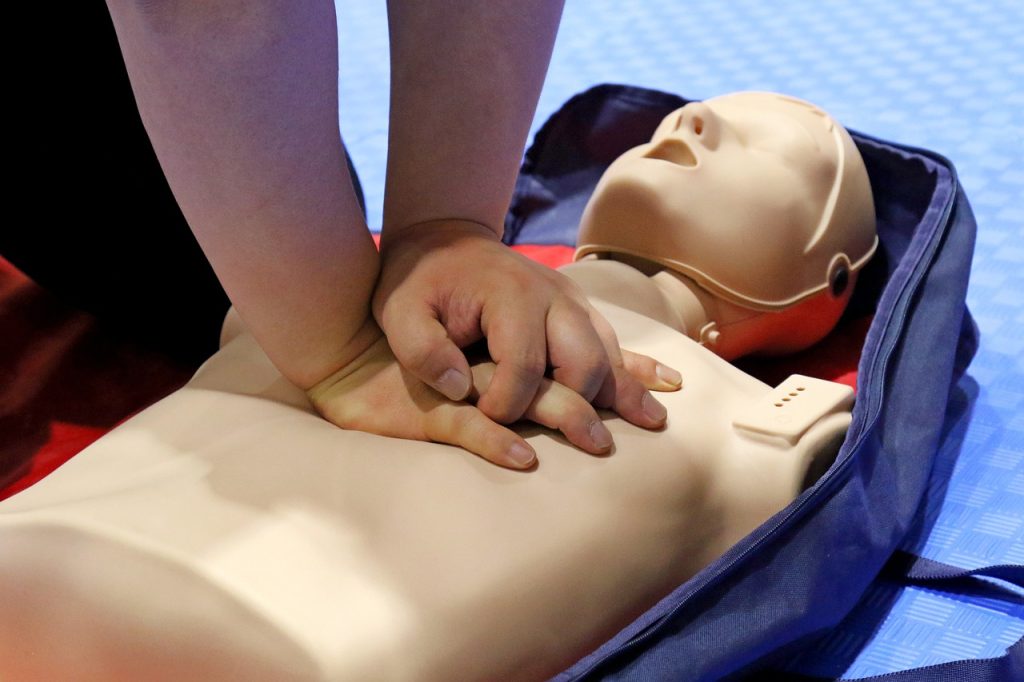
Learning Automated External Defibrillator (AED) and Cardiopulmonary Resuscitation (CPR) practice can mean the change between life and death. Every year, countless lives are tragically lost due to sudden cardiac arrest. But, equipped with the right knowledge and skills, you can become a hero and potentially save a life. This essential guide dives into the world of CPR and AED training, equipping you with the basics to make a critical difference in an emergency.
CPR and AED training equips individuals with the necessary skills and knowledge to respond effectively in the event of a cardiac emergency. It empowers you to take decisive action while waiting for medical professionals to arrive.
CPR: This life-saving technique involves chest compressions and rescue breaths. By manually pumping the heart and providing oxygen, CPR can maintain blood flow until help arrives.
AED: This portable device analyzes the heart rhythm and, if necessary, delivers an electrical shock to restore a normal heart rhythm.
CPR and AED training is beneficial for everyone, regardless of age or background. It empowers individuals to act decisively in emergencies, potentially saving the lives of loved ones, colleagues, or even strangers. Here are some specific groups who can significantly benefit from this training:
Typically, CPR and AED training programs consist of:
Learning CPR and AED usage boasts several advantages:
Beyond the universal benefits of increased confidence, improved survival rates, and a sense of community responsibility,
CPR and AED training offer several advantages specific to Tucson residents:
Public safety roles:
As mentioned earlier, many public venues in Tucson, including parks, community centers, and even shopping malls, are equipping staff with CPR and AED training. Possessing these valuable skills can significantly boost your resume and give you an edge when applying for positions in such settings. Additionally, some schools and childcare facilities prioritize hiring individuals with CPR and AED certifications, making these skills even more valuable.
Healthcare and Fitness Industries:
Healthcare facilities, including hospitals, nursing homes, and rehabilitation centers, and fitness centers often require CPR and AED certification for various staff positions. Acquiring these skills can open doors to diverse career opportunities in these sectors.
Tucson’s vibrant outdoor scene attracts residents and tourists alike to engage in activities like hiking, biking, and swimming. These activities, while enjoyable, can come with inherent risks. Being CPR and
AED certified can equip you to respond to emergencies that may occur during outdoor adventures, potentially saving the life of a fellow enthusiast.
With Tucson’s growing elderly population, the risk of cardiac emergencies among loved ones becomes a concern for many families. Having CPR and AED training can provide peace of mind and the ability to act decisively in the event of an emergency, potentially saving the life of a family member or friend.
Resilience:
Being prepared for unexpected situations not only benefits others but also contributes to your own safety. Knowing CPR and AED skills can empower you to respond effectively in case you encounter a cardiac emergency in public spaces, potentially saving a stranger’s life. This widespread preparedness creates a more resilient community, better equipped to handle emergencies and minimize casualties. By equipping yourself with CPR and AED skills, you are not only investing in your own safety and career prospects but also contributing to a safer and more prepared Tucson for everyone.
Knowing CPR and AED skills can equip you to be a hero in your community. By taking action and getting trained, you gain the confidence and knowledge to respond effectively in a cardiac emergency, potentially saving a life.
Numerous organizations offer CPR and AED training programs, allowing you to find the perfect option that aligns with your needs and preferences. Explore local training opportunities, and if you’re located near Tucson, Arizona, consider enrolling in a comprehensive CPR and AED training course conveniently offered in your area. Enroll with us at CPR Classes Near Me Tucson
Remember: Every second matters in a cardiac emergency. By acquiring these crucial skills, you are not only empowering yourself but also contributing to a safer and more prepared community.